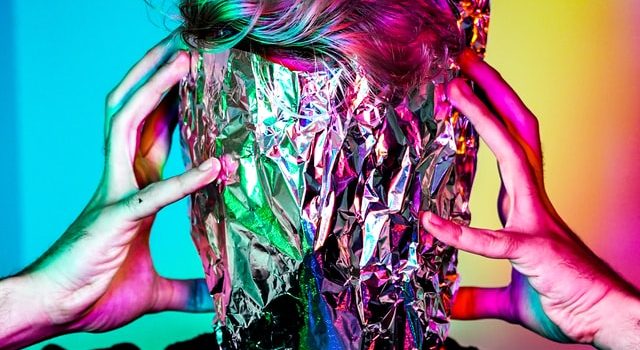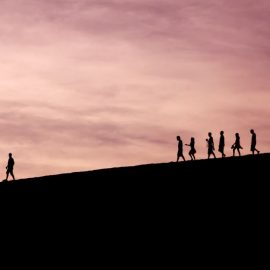

This article gives you a glimpse of what you can learn with Shortform. Shortform has the world’s best guides to 1000+ nonfiction books, plus other resources to help you accelerate your learning.
Want to learn faster and get smarter? Sign up for a free trial here .
Can anyone become a creative person? Or is creativity a special talent akin to high IQ?
Contrary to a common misconception, creativity isn’t a prerogative of a few gifted minds, but rather a force that lies dormant within each of us. One way you can tap into your creative potential is to read the works of accomplished creative minds.
Here’s a roundup of the best books about creativity from our library.
The Creative Impulse
We, humans, enjoy and take pride in our creativity. The creative impulse dates back to prehistoric times—ancient cave drawings and sophisticated and aesthetically pleasing tools dating back 2.5 million years ago are some examples.
The proclivity to be creative is encoded in human DNA, which is why absolutely everyone has creative potential. However, not everyone knows how to tap into it. If you want to learn how to awaken your creative genius, here are our picks of the best books about creativity and innovation:
If you’ve ever felt a creative tug or impulse, writer Elizabeth Gilbert can help you act on it. According to Gilbert, the author of the best-selling memoir Eat Pray Love, creativity is not just the domain of a few brilliant professional artists, but rather an enriching way of life that anyone can adopt at any time. If you embrace creativity, you’ll experience “Big Magic”: a mystical or spiritual force of creativity that brings joy and purpose.
When Ed Catmull, co-founder of Pixar Animation Studios, started his career, he had one goal: Create films using computer-generated animation. Despite a multitude of challenges, Catmull worked tirelessly to advance the technology of computer animation and, eventually, co-founded Pixar to marry his love of animation with his expertise in computer technology.
Through the journey of Pixar’s creation, Catmull developed leadership strategies that fostered creativity in the workplace while ensuring that the company remained profitable and successful. In Creativity, Inc., Catmull breaks down the most important factors in building and sustaining a creative culture. From removing fear from failure and protecting new ideas, Catmull explains the ways Pixar’s creative culture allowed it to grow into the animation behemoth it is today.
At some point in their life, every artist has wished for a sure-fire method to enhance their creativity. Luckily, Julia Cameron provides that method in Seeking Wisdom. She explains that spirituality is the key to creativity—to maximize your creative potential, you must first get in touch with divinity through prayer.
Throughout the book, Cameron walks you through each step of your spiritual journey, using anecdotes from her own life and interviews with those close to her to illustrate her recommendations. You’ll discover how you can begin communicating with the divine, the types of prayers you should practice, and how to channel your spirituality into your creative endeavors.
Austin Kleon has risen to fame with his trilogy of books about creativity in our digital culture: Steal Like an Artist, Show Your Work!, and Keep Going, which address how you can succeed at your creative endeavors and how you can promote yourself effectively.
In Show Your Work!, Kleon argues that the best way to promote what you do is to publicly share it throughout your whole process, from the earliest phases to the finished product. This allows you to focus on honing your skills while making yourself available to be discovered.
Can anyone be creative? Seth Godin’s The Practice dismantles the long-standing myth that creativity requires a special kind of “magic.” Godin argues that making creative work doesn’t require genius, lightning bolts of inspiration, or even confidence.
Instead, creativity is a skill that can be learned. To be successful in creative endeavors, you simply need to maintain a consistent practice of creating and sharing your work with others. In this New York Times best seller, Godin tells you just how to do that.
In Steal Like an Artist, Austin Kleon (a self-described “writer who draws”) shares his tips for maximizing your creativity, finding inspiration, breaking out of a creative rut, and connecting with other people doing exciting work. His advice applies to anyone who uses creative thinking in their work, not just to artists in the traditional sense.
How does the way you see something affect what you see? Does the public really need museums and art critics to explain the meaning of creative works to them? In Ways of Seeing, critic John Berger argues that throughout history, the way we see art has been manipulated by a privileged minority to preserve their social and economic dominance.
The book challenges the idea that to understand and appreciate works of art, we need experts to “translate” them for us. Rather, Berger urges us to pull back the curtain and look at the images before us with our own eyes.
In Leonardo da Vinci, Walter Isaacson narrates the life, accomplishments, and struggles of the Italian painter, engineer, and scientist—the ultimate Renaissance man. He traces Leonardo’s evolution, finds explanations for his flaws, and extracts lessons from his life and work that you can apply to your own.
Isaacson believes that making cross-disciplinary connections is at the core of being innovative, creative, and, ultimately, a genius. There’s no better example of this than Leonardo da Vinci. His studies in science, engineering, and art helped him satisfy his curiosity and understand the world around him, and they contributed to making his masterpieces scientifically accurate, innovative, and intriguing.
Do you feel a calling inside to create or inspire the world? Do you struggle to follow that calling because of doubt, fear, or lack of motivation? The War of Art spells out the reason you struggle to reach your dreams and provides strategies to help you overcome the obstacles. Each creative person experiences resistance in the form of fear when they approach their true work. When you understand where that fear comes from, how it manifests in your life, and how a commitment to your work can give you the strength to push forward, you will be successful in living your dreams.
Final Words
Contrary to a popular misconception, being creative doesn’t require high intelligence, suffering, or even confidence. Creative genius is hidden within all of us, waiting to be awakened and channeled into works of wonder and inspiration. In other words, creativity is a skill that can be developed, and there are methods to help you do that.
One way to spur your inner creative genius is to read. Reading books about creativity can help you channel your thinking in ways that lead to unique insights that go against the grain. There are also many books that teach ways to stimulate creativity in a business context.
If you want to check out our guides of the best books about creativity listed above, head over to our library. And if you have any book suggestions to add to the above list of the best books about creativity, let us know in the comments!

Want to fast-track your learning? With Shortform, you’ll gain insights you won't find anywhere else .
Here's what you’ll get when you sign up for Shortform :
- Complicated ideas explained in simple and concise ways
- Smart analysis that connects what you’re reading to other key concepts
- Writing with zero fluff because we know how important your time is






